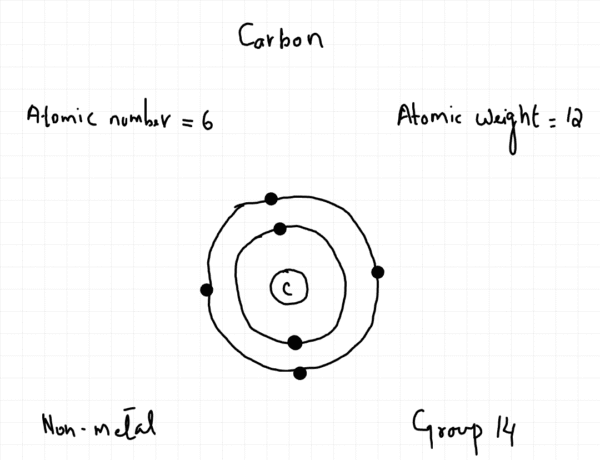An atom, once believed to be the smallest indivisible unit of matter, is fundamentally composed of three key types of subatomic particles: the proton, the neutron, and the electron. The arrangement and number of these particles within an atom determine the chemical identity and properties of an element.
The vast majority of an atom’s volume is empty space, with its mass concentrated in a tiny, dense central region called the nucleus.
Properties of Subatomic Particles
Each subatomic particle is defined by its relative mass, relative electrical charge, and location within the atom. For chemical purposes, we use relative values rather than actual ones, as the real values are incredibly small. The proton is used as a standard for comparison.
| Subatomic Particle | Relative Mass | Relative Charge | Location in the Atom |
| Proton (p) | 1 | +1 | Inside the nucleus |
| Neutron (n) | 1 | 0 (Neutral) | Inside the nucleus |
| Electron (e⁻) | 1/1836 | -1 | In shells orbiting the nucleus |
As shown in the table, protons and neutrons (collectively known as nucleons) account for almost all the mass of an atom. The mass of an electron is so small in comparison that it is often considered negligible in mass calculations. In any neutral atom, the number of electrons is equal to the number of protons, resulting in an overall neutral charge.
Evidence and Behaviour in Electric Fields
The charge of each subatomic particle can be demonstrated by observing its behaviour in an electric field. Experiments show that when beams of these particles travel between two electrically charged plates, their paths are affected differently.
- Protons, being positively charged, are deflected away from the positive plate and towards the negative plate.
- Electrons, being negatively charged, are deflected away from the negative plate and towards the positive plate.
- Neutrons, having no charge, are not deflected at all and continue on a straight path.
An important observation is that electrons are deflected to a much greater extent than protons when moving at the same velocity. This is direct evidence that the mass of an electron is significantly smaller than that of a proton.

Defining Atoms and Calculating Neutron Numbers
The number of each type of subatomic particle is crucial for defining atoms, ions, and isotopes.
- Atomic (Proton) Number (Z): The number of protons in the nucleus defines the element. Every atom of a specific element has the same number of protons.
- Mass (Nucleon) Number (A): This is the total number of protons and neutrons in the nucleus.
- Ions: An atom becomes an ion when it gains or loses one or more electrons. The loss of electrons results in a positive ion (cation), while the gain of electrons results in a negative ion (anion). The number of protons and neutrons in the nucleus remains unchanged.
Finding the Number of Neutrons
You can calculate the number of neutrons in an atom’s nucleus by subtracting the atomic number from the mass number.
Number of neutrons = Mass number (A) – Atomic number (Z)
Example 1: Aluminium An atom of aluminium has a mass number of 27 and an atomic number of 13.
Number of neutrons = 27 – 13 = 14 neutrons.
Example 2: Isotope of Oxygen For a specific isotope like oxygen-18, the mass number is 18 and the atomic number is 8.Number of neutrons = 18 – 8 = 10 neutrons.
